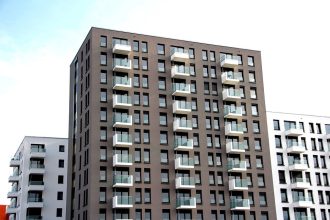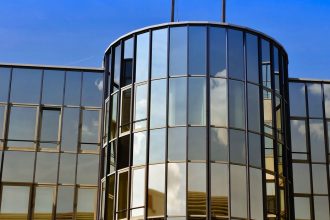Green Tech Revolution: The Rise of Smart Sustainable Cities Worldwide
In recent years, the drive for urbanization has accelerated, resulting in increased pressure on cities to manage resources sustainably while enhancing the quality of life for their inhabitants. This has led to the rise of smart sustainable cities— urban environments that integrate technology, sustainability, and efficient resource use to create harmonious living spaces. The Green Tech Revolution is at the forefront of this transformation, bringing forth innovations in building design, energy use, and urban planning to pave the way for a sustainable future.
Smart Sustainable Cities: A Global Movement
Smart sustainable cities leverage information and communication technologies (ICT) to manage assets such as transportation systems, power plants, water supply networks, and waste management. The ultimate goal is to improve the quality of life in urban areas while minimizing the ecological footprint. Cities like Amsterdam, Singapore, and Barcelona are excellent examples of this movement, showcasing various initiatives that embody smart sustainability.
In Amsterdam, the city’s extensive cycling infrastructure, smart traffic management systems, and smart energy grids have made it one of the most bike-friendly cities in the world. Singapore has utilized data analytics to optimize public transport systems, thereby reducing congestion and enhancing mobility. Barcelona has integrated green spaces and smart waste management solutions, encouraging a circular economy mindset among residents.
Sustainable Real Estate Development: A Pillar of Green Tech
Central to the development of smart sustainable cities is sustainable real estate development. This encompasses innovative building practices that combine aesthetics with functional sustainability. Developers are increasingly adopting green building certifications like LEED (Leadership in Energy and Environmental Design) and the Living Building Challenge (LBC), which set rigorous standards for sustainability in architecture and construction.
The Living Building Challenge, launched by the Cascadia Green Building Council in 2006, is a holistic certification program that promotes a regenerative approach to the built environment. Buildings must meet specific performance requirements in several categories, such as energy, water, materials, and health. The LBC’s "Seven Petals" framework includes:
- Site: Building in harmony with the site and avoiding negative land impacts.
- Water: Achieving net-zero water use through rainwater harvesting and passive water sourcing.
- Energy: Producing more energy on-site than consumed annually (Net Positive Energy).
- Health: Using materials that promote occupants’ health and well-being.
- Materials: Ensuring material transparency and responsibly sourcing all materials.
- Equity: Creating spaces that are inclusive and open to all members of the community.
- Beauty: Designing aesthetically pleasing structures which inspire and uplift their inhabitants.
Innovative Practices in Green Building Design
Several innovative practices showcase how sustainable real estate development can redefine our approach to building design and construction:
-
Biophilic Design: Integrating natural elements into buildings, such as green walls, natural ventilation, and the use of sunlight to enhance well-being and productivity. These design principles can yield psychological and health benefits for occupants.
-
Energy Efficiency Technologies: Incorporating advanced technology such as smart meters, high-performance HVAC systems, and energy-efficient windows can significantly reduce energy consumption. For instance, the Bullitt Center in Seattle, certified by the Living Building Challenge, exemplifies energy efficiency through its natural ventilation system and solar panels, producing more energy than it consumes.
-
Adaptive Reuse: Transforming existing structures instead of building anew can reduce waste and preserve the cultural heritage of communities. Projects like the High Line in New York City exemplify how adaptive reuse can create vibrant urban spaces while maintaining sustainability.
-
Water Management Innovations: Rainwater harvesting systems, green roofs, and permeable pavements can help manage stormwater runoff while reducing demand on municipal water systems. The Bosco Verticale (Vertical Forest) in Milan showcases how residential buildings can be integrated with nature, improving air quality while providing functional green spaces for residents.
- Smart Technology Integration: Integrating IoT devices can optimize energy consumption and streamline the management of building systems. Smart thermostats, automated lighting systems, and real-time energy monitoring can lead to significant reductions in energy use.
Conclusion: The Path Forward
The Green Tech Revolution is fundamentally reshaping our cities and real estate development practices. As the global population continues to urbanize, the need for smart sustainable cities becomes increasingly critical. Initiatives like the Living Building Challenge and innovative building designs are leading the charge in rethinking how we approach urban life.
By leveraging technology, prioritizing sustainability, and involving communities in the planning process, we can create cities that are not only environmentally responsible but also vibrant and inclusive. The challenge remains—how to scale these practices worldwide and ensure that future development is sustainable, resilient, and equitable.
In exploring the intersection of technology and sustainability in urban development, we stand at a pivotal moment that could lead to converting our ecological challenges into opportunities for innovative solutions. Embracing this vision can empower us all to become stewards of our environment, making sustainable living an accessible reality for generations to come.







